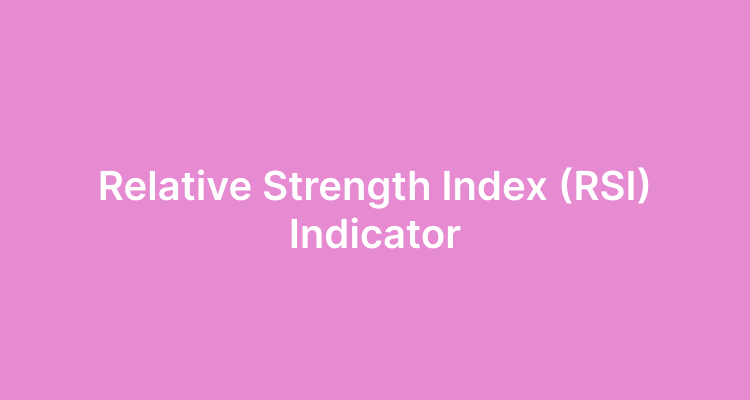As a trader, making the right decisions at the right time is critical to success. One way to improve your trading decisions is by using technical indicators like the Relative Strength Index (RSI). The RSI is a powerful tool. It can help traders identify potential areas of overbought and oversold conditions in the market. In this article, we’ll explore what the RSI is, how it works, and how it can be used to make profitable trading decisions.
What is Relative Strength Index (RSI)?
The Relative Strength Index (RSI) is a technical analysis indicator used to measure the strength and speed of price movements. The RSI is a momentum oscillator that ranges from 0 to 100. The higher the RSI, the more overbought the market is. And the lower the RSI, the more oversold the market is. The RSI is calculated by comparing the average gains and losses over a period of time, typically 14 days.
How does Relative Strength Index work?
The RSI works by measuring the strength and speed of price movements. It compares the average gains and losses over a period of time and expresses them as a ratio. The RSI is then plotted on a graph as a line that ranges from 0 to 100. When the RSI is above 70, it indicates an overbought market. And when it is below 30, it indicates an oversold market.
How can it be used in trading?
Traders can use RSI in a variety of ways in trading. Here are some of the most common uses:
- Identifying overbought and oversold conditions. The RSI can be used to identify potential areas of overbought and oversold conditions in the market. When the RSI is above 70, it indicates an overbought market and a potential reversal. When the RSI is below 30, it indicates an oversold market and a potential buying opportunity.
- Divergence. The RSI can also be used to identify potential divergences between price and momentum. For example, if the price is making higher highs but the RSI is making lower highs, it can indicate a potential reversal.
- Confirmation of trends. The RSI can also be used to confirm trends in the market. If the price is making higher highs and the RSI is also making higher highs, it can indicate a strong uptrend.
Conclusion
The Relative Strength Index (RSI) is a powerful tool. It can help traders identify potential areas of overbought and oversold conditions in the market. Traders can use it to identify divergences and confirm trends. While it is not a perfect tool, it can be a valuable addition to a trader’s toolbox. As with any tool, it is important to use the RSI in conjunction with other indicators and analysis techniques to make informed trading decisions.
In conclusion, the RSI is a key technical analysis tool that can help traders make profitable trading decisions. By measuring the strength and speed of price movements, the RSI can identify potential areas of overbought and oversold conditions, as well as confirm trends and identify divergences. Whether you are a beginner or an experienced trader, the RSI is a must-have tool in your trading arsenal.
As with any trading strategy, it is important to practice risk management and always use a stop-loss when trading with the RSI. By using the RSI in combination with other indicators and analysis techniques, you can make informed trading decisions and increase your chances of success in the market.
